Ker & Downey Africa > Journal > Iconic Birds of the Okavango Delta
Southern Africa plays host to a number of extraordinary birding destinations, but the birds of the Okavango Delta in Botswana are hard to beat!
Easily considered one of Africa’s top birding destinations, Botswana’s diverse habitats and pristine protected areas attract hundreds of species of European and North African migratory birds. From the rich wetlands to the arid Kalahari to vast expanses of the Chobe National Park, the birds of Botswana flourish with over 600 species having been recorded to date.
The verdant, watery Okavango Delta is considered to be the most dynamic destination for birding in Botswana. This great wetland sanctuary is a UNESCO World Heritage Site and boasts over 400 recorded species. The Delta transforms during the rainy months (October to April) with floodwaters bringing an abundance of birds who feed off insects and small creatures as they attempt to find dry land. It is a bird enthusiast’s paradise!
We’ve compiled a list of some of the most iconic birds of the Okavango Delta to look out for when on safari in this diverse landscape:
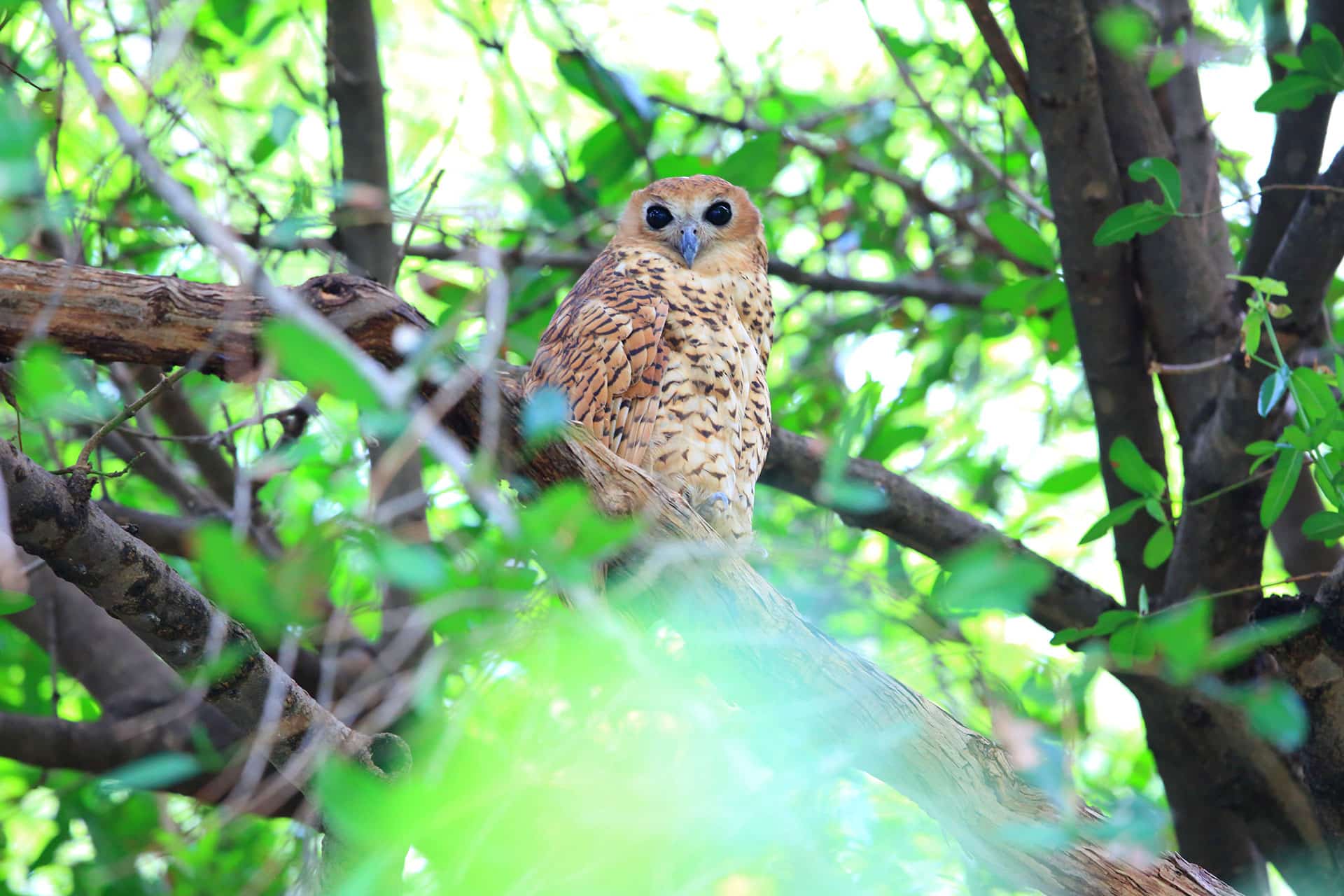
The Pel’s fishing owl is one of the most elusive and sought after birds of the Okavango Delta, most commonly seen on the Okavango panhandle and permanent Delta. For most twitchers this bird is on the top of their bucket list. It is considered by some to be the Holy Grail of rare birds. As its name suggests, the Pel’s fishing owl is skilled and efficient at catching fish that it grabs with its impressive talons from just under the surface of the water. These secretive birds are seldom spotted. They perch high up in trees during the day, ensuring they are hidden from sight and from the dangers of other predatory birds.
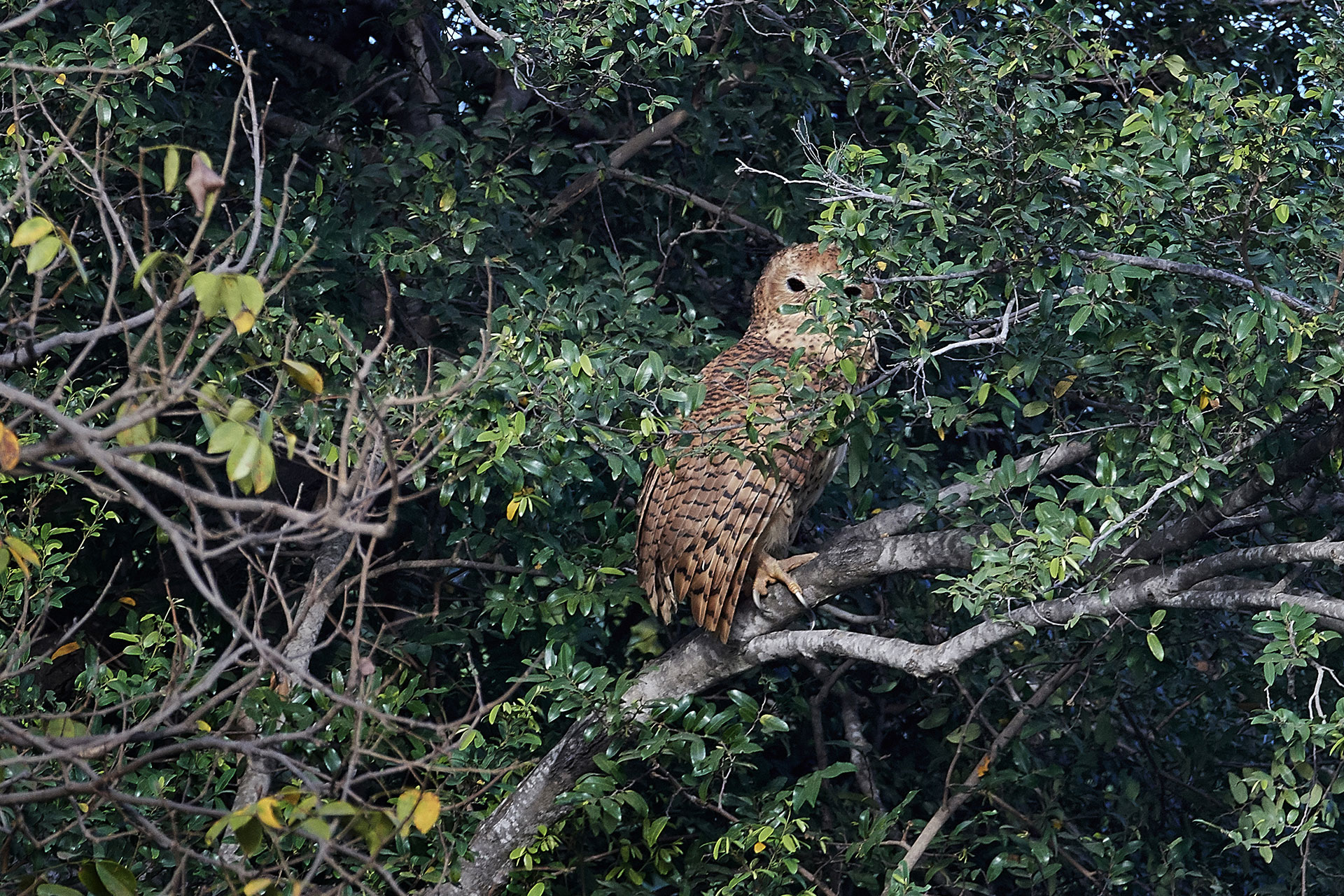
Pel’s fishing owls are ginger with black spots and large black eyes. They lack the characteristic facial disk of most owls which is said to enhance their acute hearing abilities. Because these fascinating birds hunt prey that lives under the water, it is believed that they have evolved without this distinctive feature.
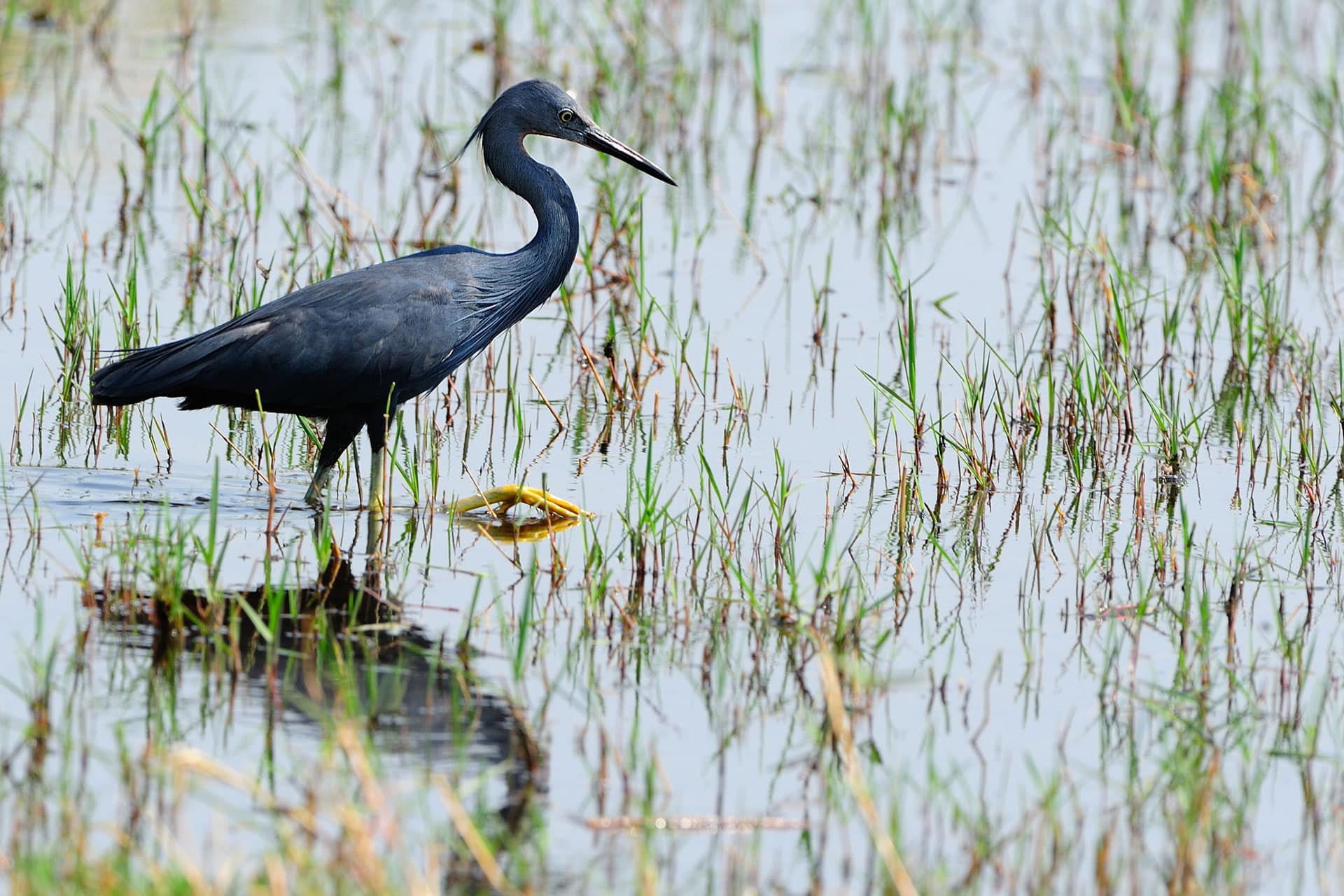
The slaty egret is an aquatic bird of the Okavango Delta. It is often spotted shuffling its feet in the watery marshlands – a clever tactic to surprise unsuspecting frogs and small fish (mostly bream). These birds thrive in freshwater rivers, floodplains, and shallow wetlands, avoiding open areas and most often seeking cover in long grass. The slaty egret typically occurs in small groups of around 4 – 8, but can also be found searching for food solitarily from time to time. While it may resemble the black egret, the slaty egret does not follow the same mantling technique of positioning its wings over its head to form an umbrella to assist in fishing.
The slaty egret has a narrow black bill with a dull keel to the lower mandible. Black plumes stretch beyond their tail with curved tips and chest plumes are blended with a slightly red tone. Their long legs are yellow green with bright yellow toes.
The elusive white-backed night heron is a secretive and shy inhabitant of the Okavango Delta. They are strictly nocturnal and roost during the day in the deepest shade of waterside vegetation. They are most likely to be seen on a mokoro safari in the early evenings as they start to become active. Their strong spear-shaped bill is used to spear fish, arthropods, small frogs and freshwater crabs which comprise most of its diet. Like all herons, their specialized neck vertebrae is able to form an S-shape which acts as a coil spring, giving their sharp bill incredible speed to shoot towards unsuspecting prey.
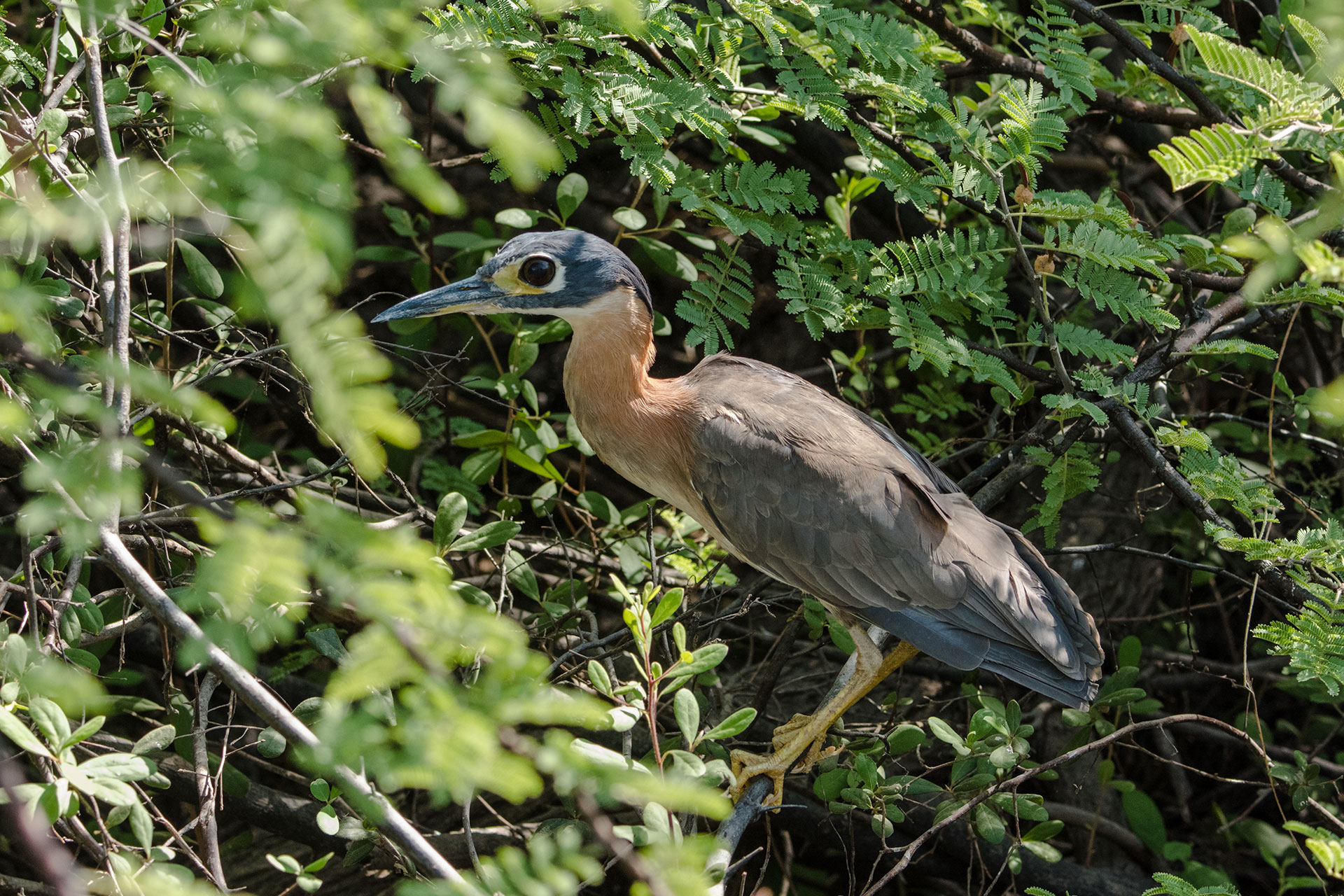
These skulking birds have been described as dark, chunky and handsome. They have rufous upper chests and necks, with white spectacles that circle large, dark red eyes. The narrow white plumes on the back are hidden when they are perched. The sharp bills are black and legs are a yellowish green colour.
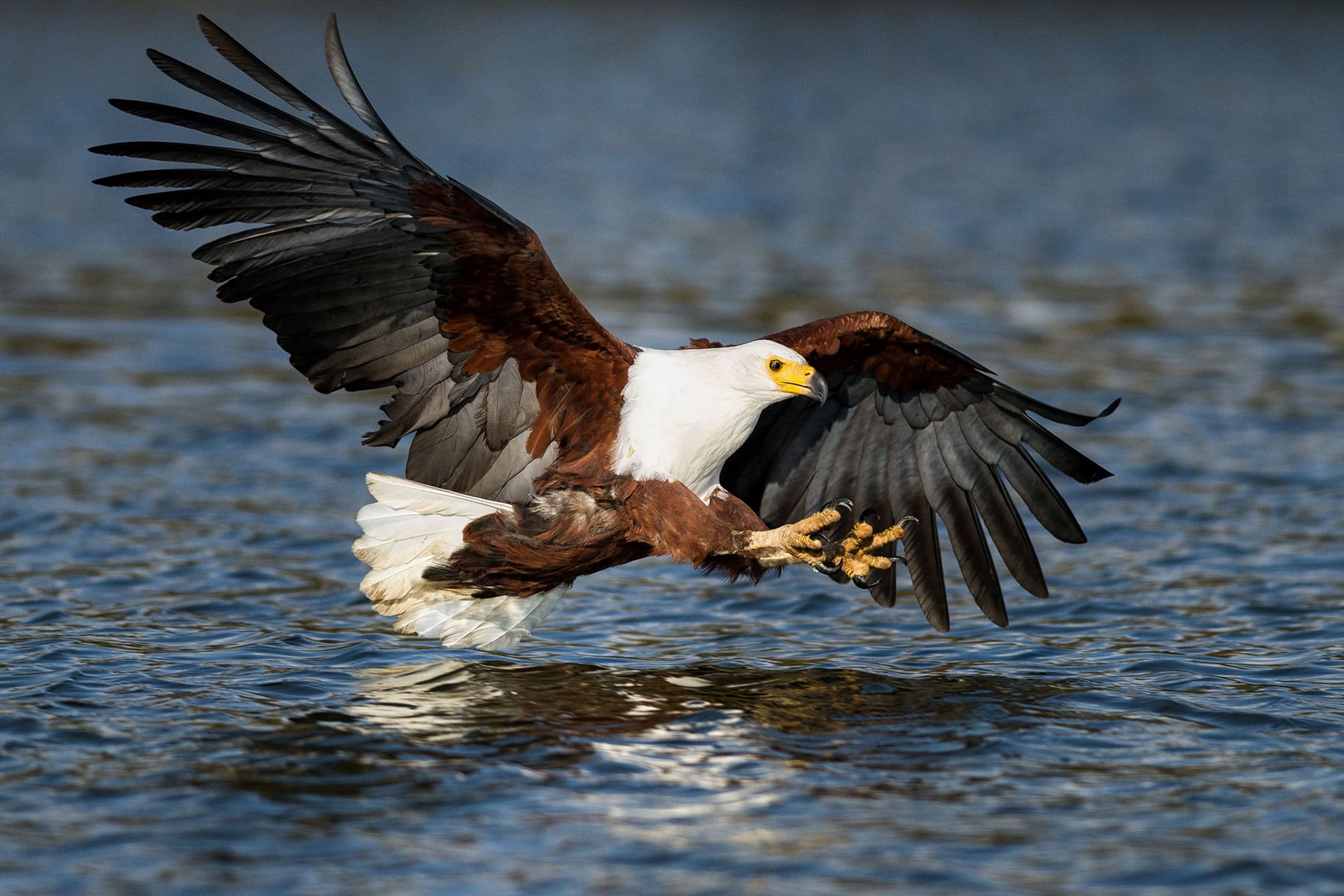
The African fish eagle is an impressive raptor and symbol of pride for the continent. It is the national bird of Botswana’s neighbors, Zambia and Zimbabwe. This expert apex predator feeds predominantly on fish. However, it is also known to take carrion, and steal the prey of other birds .They are monogamous and often seen in pairs, even sharing kills made by either of them. They are commonly seen along the waterways of the Okavango Delta and Chobe River perching on branches that overlook the water for fish. Once a fish is sighted, they swiftly swoop down and snatch it with their large, powerful talons
The African fish eagle’s iconic call is a symbol of Africa, as are its distinctive features. This striking bird has a chocolate brown body and a snow white head, breast and tail. Its featherless face is yellow, accentuating its large dark brown eagle eyes which are able to spot camouflaged prey from a distance using complex vision.
The vibrant malachite kingfisher is a small bird, around 13 cm (5.1 in) in length. It is always found near water and is a common inhabitant of the Okavango Delta. True to its namesake, this bird has exceptional fishing skills. From its regular perches or reeds low over the water, the malachite kingfisher sits upright and its tail pointed downwards waiting for its prey. Once spotted, the bird drops suddenly into the water with a splash and returns almost immediately to the surface with a struggling captive. Its razor sharp beak is perfectly designed for piercing an unsuspecting amphibian or fish or aquatic insect. These little birds have unusual flight patterns that see its short rounded wings spinning rapidly in a blurry whir in short, jagged bursts.
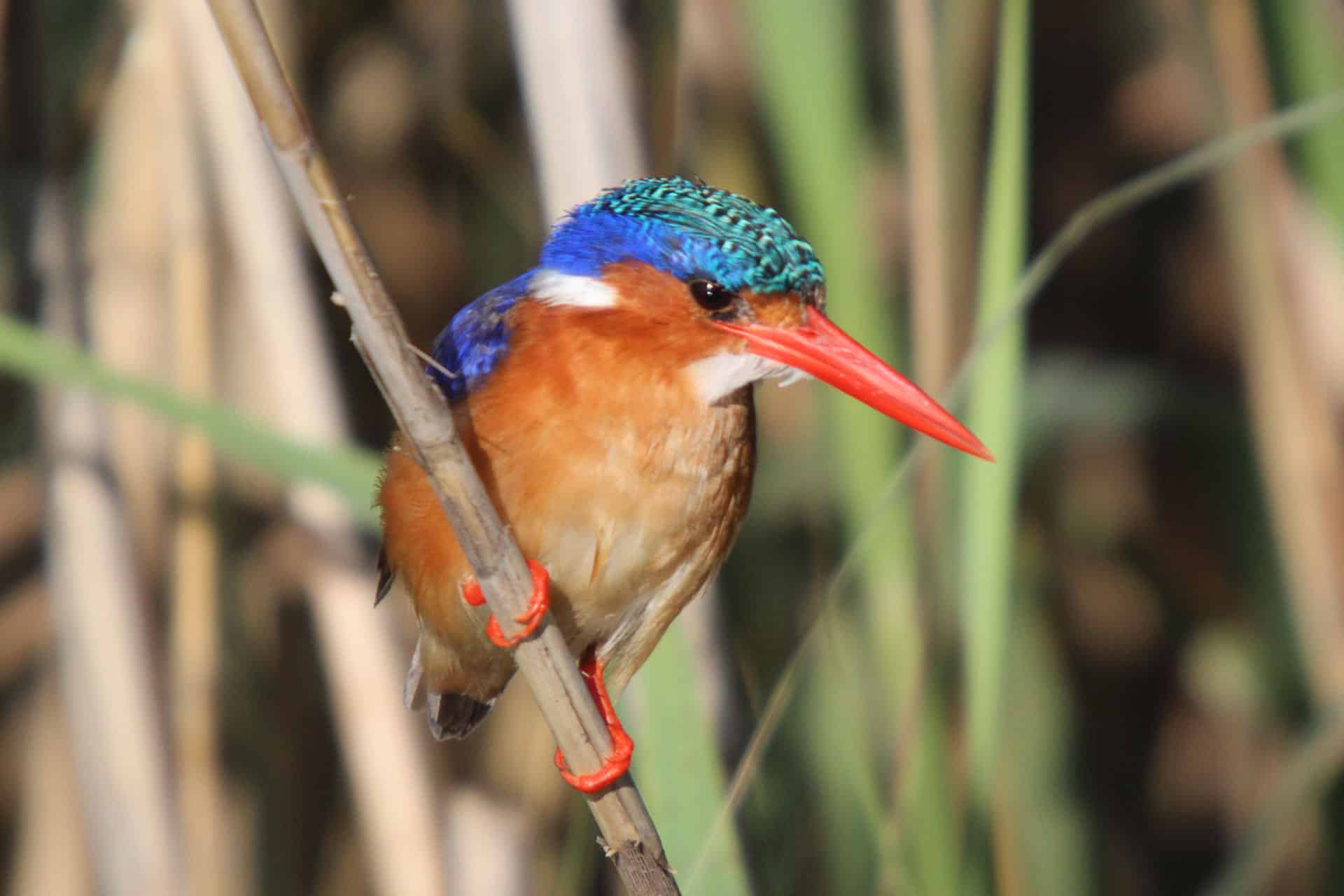
The malachite kingfisher is a stunning bird with a bright colourful plumage. The upper part of the bird is a bright metallic blue with a short crest of black and blue feathers on the head. The face and underparts are rufous with white patches on the throat and rear neck sides.
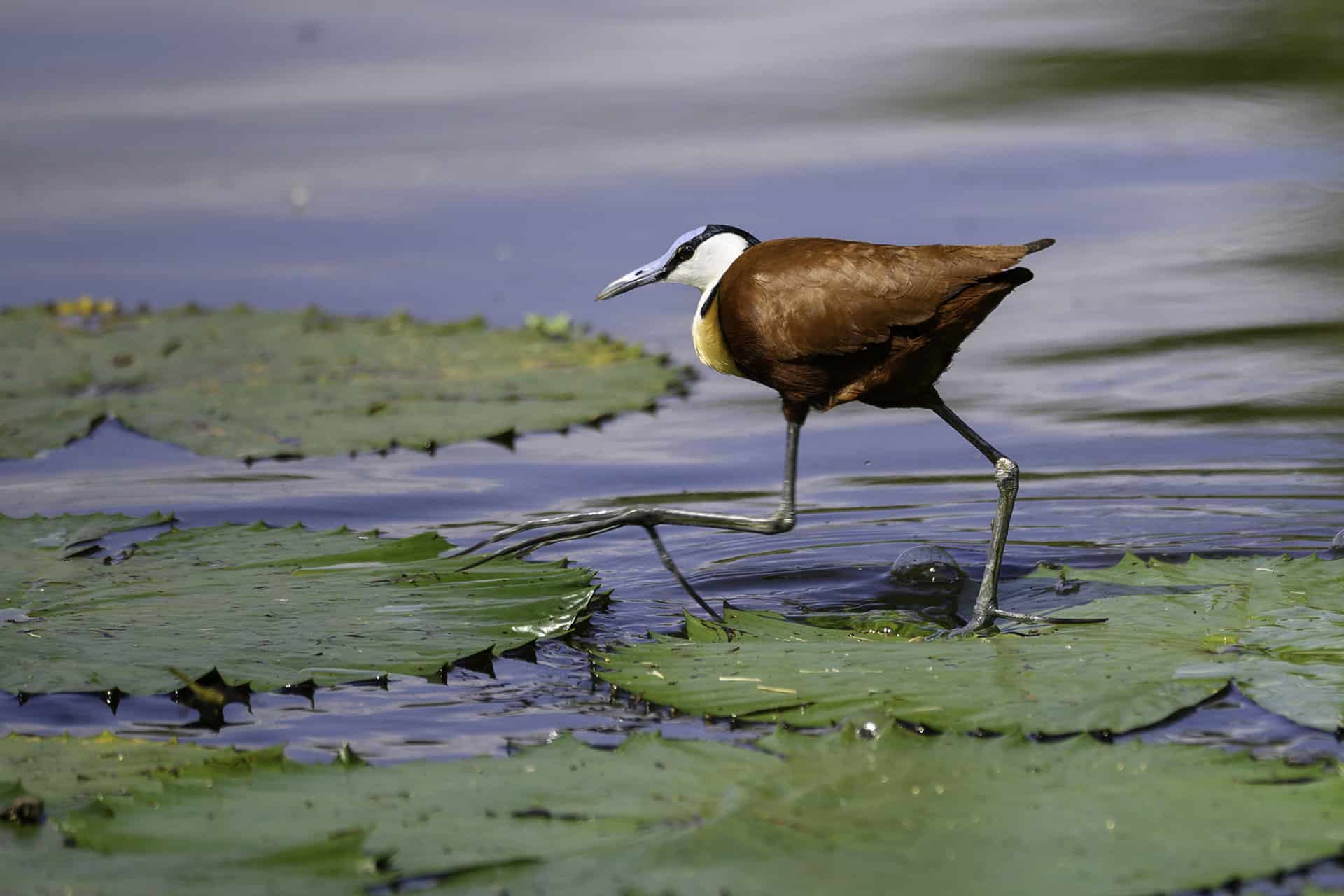
The African Jacana is found in shallow lakes and waterways in sub-Saharan Africa and is a common sighting throughout the Okavango Delta. This aquatic wader has been referred to as the “Jesus Bird” for its ability to seemingly walk on the water. Its distinctive enormous feet and ludicrously elongated toes allow it to walk on floating vegetation like water lilies without sinking. These birds are excellent swimmers but not very good flyers. They tend to fly low over the water with their long legs and toes dangling awkwardly behind them as they look out for insects and other invertebrates to pick from the floating vegetation or surface of the water. African Jacanas are polyandrous birds with a very unusual mating system that sees one dominant female maintaining a ‘harem’ of multiple males to raise her broods.
Apart from their characteristic legs and toes, the African Jacana is noted for its distinctive sky-blue bill that extends up as a coot-like head shield. They have chestnut upper and under-parts, with striking black eye stripes and wingtips.
The wattled crane is one of the most threatened birds in Botswana with only around 7,000 remaining globally. The highest concentration of these birds can be found in the Okavango Delta. Reaching an impressive height of more than 5.7 feet (1.75 meters), these towering cranes can stand taller than an adult human and weigh in at around 17 pounds (8 kilograms). These wetland-dependent birds feed mostly on aquatic vegetation, but also eat tubers, rhizomes, seeds, small reptiles, frogs, and insects. They can be seen submerging their entire heads underwater when feeding. The cranes mate for life and live in flocks and during mating season, they can be seen performing elaborate courtship rituals that involve bowing, jumping into the air, and vocalizing between one another.
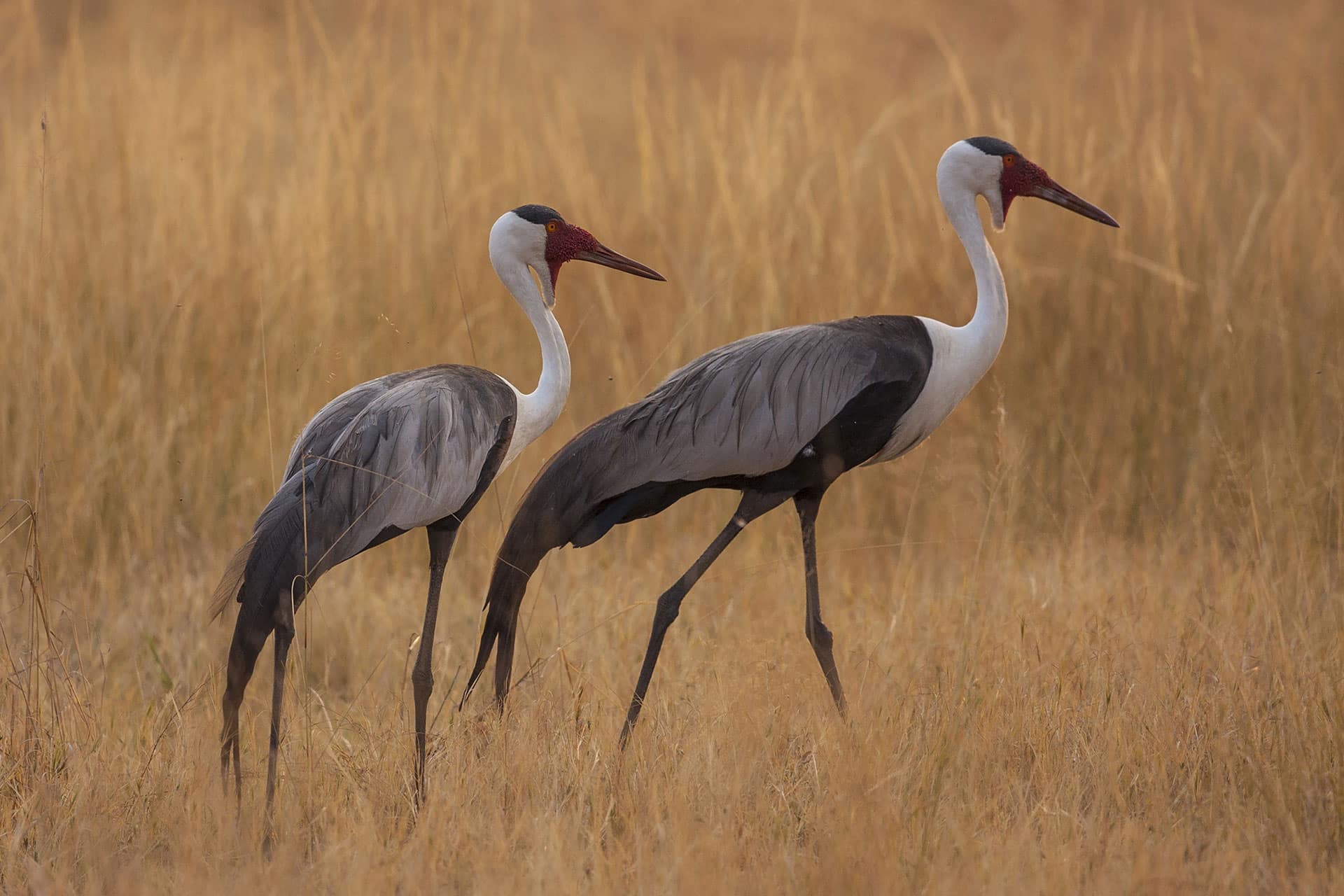
The wattled crane’s name comes from the wattles of skin that dangle from its throat and visibly indicate its mood. If the wattles shrink, the crane is said to be agitated, while if they appear extended, the birds are said to be excited. The crane’s secondary, inner-wing feathers are elongated and look like a tail when the crane is standing.
Our team at Ker & Downey® Africa partner with the best guides and lodges to plan and execute trips that provide our guests with memorable moments on their travels. An experience that includes rare and unique sightings of some of the most notable birds of the Okavango Delta is a life-changing one.
Contact us today if you are ready to start your journey and meet some of the iconic birds of the Okavango Delta.
Head office:
7 Bree Street, 6th Floor, Touchstone House, Cape Town, South Africa
+27 (0)21 201 2484
[email protected]
United Kingdom: Sportsman Farm, St Michaels, Tenterden, Kent
Ker & Downey® Africa is compliant with COVID-19 Industry Protocols.


Head office: 7 Bree Street, 6th Floor, Touchstone House, Cape Town, South Africa
+27 (0)21 201 2484
[email protected]
United Kingdom: Sportsman Farm, St Michaels, Tenterden, Kent
Ker & Downey® Africa is compliant with COVID-19 Industry Protocols.